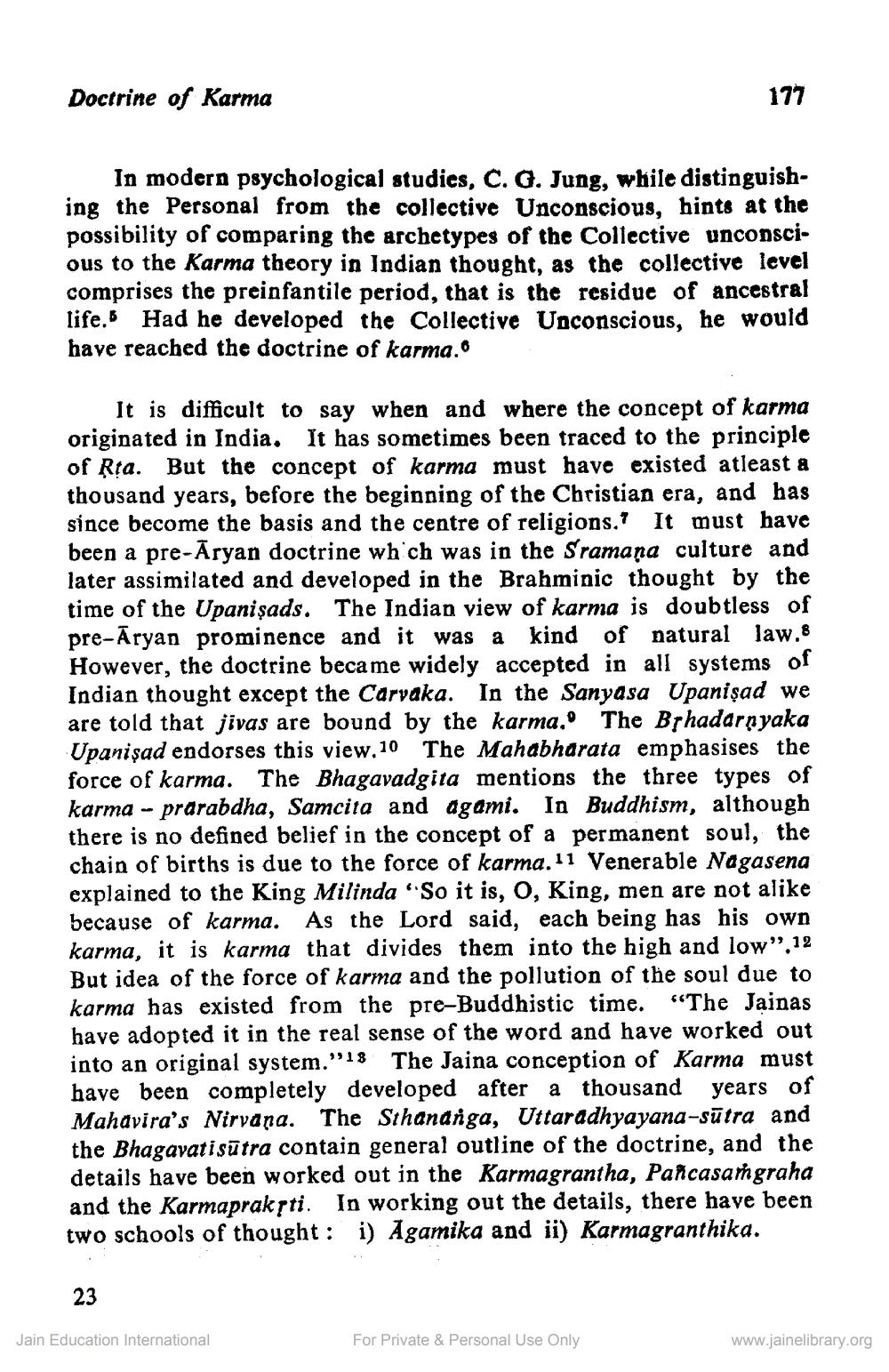________________
Doctrine of Karma
177
In modern psychological studies, C. G. Jung, while distinguishing the Personal from the collective Unconscious, hints at the possibility of comparing the archetypes of the Collective unconscious to the Karma theory in Indian thought, as the collective level comprises the preinfantile period, that is the residue of ancestral life. Had he developed the Collective Unconscious, he would have reached the doctrine of karma.
It is difficult to say when and where the concept of karma originated in India. It has sometimes been traced to the principle of Rļa. But the concept of karma must have existed atleast a thousand years, before the beginning of the Christian era, and has since become the basis and the centre of religions." It must have been a pre-Aryan doctrine which was in the Sramana culture and later assimilated and developed in the Brahminic thought by the time of the Upanişads. The Indian view of karma is doubtless of pre-Aryan prominence and it was a kind of natural law.8 However, the doctrine became widely accepted in all systems of Indian thought except the Carvaka. In the Sanyasa Upanişad we are told that jivas are bound by the karma. The Brhadarnyaka Upanişad endorses this view.10 The Mahabharata emphasises the force of karma. The Bhagavadgita mentions the three types of karma - prarabdha, Samcita and agami. In Buddhism, although there is no defined belief in the concept of a permanent soul, the chain of births is due to the force of karma. 11 Venerable Nagasena explained to the King Milinda "So it is, 0, King, men are not alike because of karma. As the Lord said, each being has his own karma, it is karma that divides them into the high and low".12 But idea of the force of karma and the pollution of the soul due to karma has existed from the pre-Buddhistic time. “The Jainas have adopted it in the real sense of the word and have worked out into an original system.”18 The Jaina conception of Karma must have been completely developed after a thousand years of Mahavira's Nirvana. The Sthananga, Uttaradhyayana-sūtra and the Bhagavati sūtra contain general outline of the doctrine, and the details have been worked out in the Karmagrantha, Pañcasagraha and the Karmapraksti. In working out the details, there have been two schools of thought : i) Agamika and ii) Karmagranthika.
23
Jain Education International
For Private & Personal Use Only
www.jainelibrary.org




